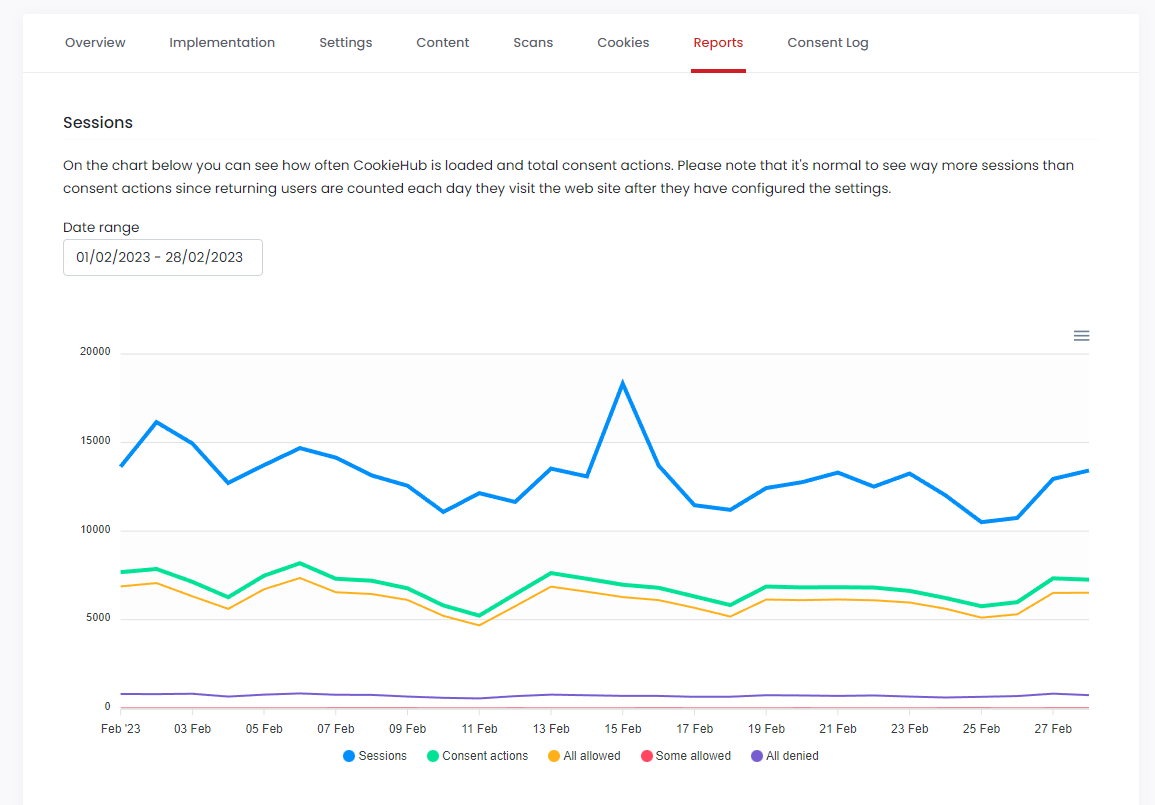Reports
The Reports tab provides an overview of your website's cookie usage and user consent actions. The following reports types are available:
Session Usage Report: This report shows the number of sessions/pageviews for your website over a selected time period. You can select a custom time period or choose from one of the predefined options.
Consent Actions Reports: These report shows the number of consent actions taken by users for each category, such as giving or withdrawing consent. You can select a custom time period or choose from one of the predefined options.
Note: In order to collect consent actions, you need to enable the Consent Log feature in the Settings tab.

Difference between sessions and consent actions
Session
A session is initiated every time a page is viewed where the CookieHub JavaScript is requested. This can occur under various circumstances:
- First-time Visit: Any user visiting for the first time, regardless of their interaction with the consent dialog (whether they accept, decline, ignore, or have never seen the dialog).
- Expired Cache: Users returning to the site after the client-side cache for the CookieHub JavaScript has expired, typically after 24 hours.
Sessions are counted based on the total number of page views, irrespective of any actions taken by the user regarding consent.
Consent action
A consent action is a distinct event recorded when a user interacts with the consent dialog to either accept or decline the use of cookies. Notably, consent actions are not as frequently logged as sessions because:
A user typically consents only once per year, unless they clear their browser cookies.
The CookieHub widget is cached for 24 hours, implying a single user could potentially trigger up to 365 sessions in a year from the same device and browser, if they visit the site daily.
Reasons for Discrepancy Between Sessions and Consent Actions
Several factors contribute to the gap between the number of sessions and consent actions:
- Recurring Users: Regular visitors contribute to multiple sessions but only a limited number of consent actions. Over time, as a site’s returning user base grows, this discrepancy tends to widen.
- Bounces and Non-Interactions: It's common for users to leave a site before taking any action (bouncing), which increases sessions without corresponding consent actions.
- Crawlers and Irrelevant Traffic: Traffic from web crawlers or users who are not the target audience can increase session counts without affecting consent actions.
- UI Design and Features: Enabling features like the 'Block User Interface' and using more prominent themes may decrease the gap by limiting content access until the user has made their consent choices.